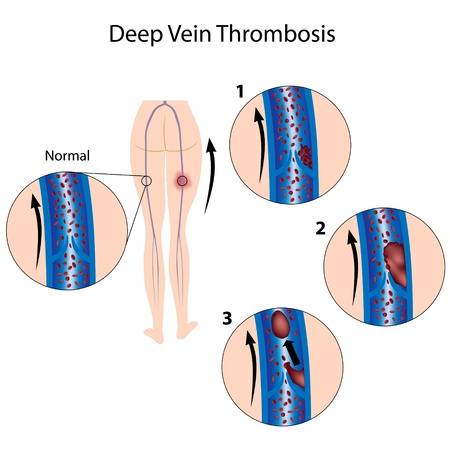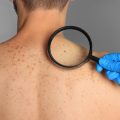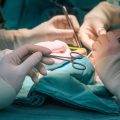Understanding Red Veins: Causes and Concerns
If you’ve ever noticed fine, reddish lines threading their way across your cheeks or nose, you’re not alone. These visible blood vessels—commonly known as red veins, thread veins, or by their medical name telangiectasia—are a frequent skin concern for many in the UK. While they’re often harmless, their appearance can cause both cosmetic worry and a knock to self-confidence. Red veins typically manifest as small, web-like clusters or single lines, ranging from bright red to purplish hues, most commonly found on the face and legs.
But what actually causes these pesky red veins? Genetics play a significant role; if your parents had them, chances are you might too. Environmental factors are also key culprits. The famously unpredictable British weather—with its cold winds and occasional sunbursts—can lead to frequent temperature changes that stress delicate blood vessels. Additionally, lifestyle factors such as excessive sun exposure (yes, even in the UK!), heavy alcohol consumption, hormonal changes, and skin trauma can all contribute to their formation.
Red veins are more common than you might think; studies suggest a significant percentage of adults in Britain experience them at some stage. Whether it’s due to fair skin tones prevalent across the UK or the impact of our climate and lifestyle habits, red veins have become an everyday skincare issue here. While not usually a sign of serious medical problems, their prominence can feel frustrating—especially when they stubbornly resist over-the-counter creams and home remedies. That’s where light-based therapies step in, offering hope for clearer skin and renewed confidence.
2. Light-Based Therapies: An Overview
When it comes to treating red veins—often referred to as thread veins or spider veins—in the UK, light-based therapies such as IPL (Intense Pulsed Light) and laser treatments have become highly sought-after solutions. Both options use advanced technology to target and diminish unwanted blood vessels, offering a modern approach that fits seamlessly with British preferences for minimally invasive, effective skincare. Below, I’ll share my personal insights into these therapies and why they’ve captured attention across the country.
How IPL and Laser Treatments Work
Both IPL and laser therapies harness the power of light energy to break down visible red veins just beneath the skin’s surface. However, their mechanisms and applications differ slightly:
| Treatment Type | How It Works | Typical Use in the UK |
|---|---|---|
| IPL (Intense Pulsed Light) | Delivers broad-spectrum pulses of light that are absorbed by blood vessels, causing them to heat up and gradually fade away. | Popular for treating facial veins and areas with lighter, finer redness. |
| Laser Therapy | Uses a focused single wavelength of light to specifically target deeper or more prominent veins, coagulating them for natural reabsorption by the body. | Favoured for more stubborn or deeper veins, including those on the legs. |
Why Light-Based Therapies Are Popular in Britain
The appeal of IPL and laser treatments among Britons is rooted in their effectiveness and convenience. With minimal downtime, these procedures fit neatly into busy lifestyles—perfect for anyone balancing work, family, and social commitments. Moreover, both options are typically performed in professional clinics registered with the Care Quality Commission (CQC), reflecting the UK’s high standards for safety and care.
Aesthetic Results That Match British Sensibilities
In my own experience and through conversations with practitioners across London and beyond, I’ve found that many people appreciate these treatments for delivering subtle yet meaningful results. There’s no need for heavy makeup to conceal redness; instead, skin appears naturally clearer—a look very much in tune with understated British beauty ideals.
Summary Table: Key Benefits at a Glance
| Benefit | IPL | Laser Treatment |
|---|---|---|
| Non-invasive procedure | ✔️ | ✔️ |
| Minimal recovery time | ✔️ | ✔️ |
| Treats both face & legs | Mainly face/upper body | Face & legs (including deeper veins) |
| Suits different vein types | Lighter/finer veins | Darker/deeper veins |
| CQC-regulated clinics available nationwide | ✔️ | ✔️ |
By exploring IPL and laser therapies through both clinical evidence and lived experiences here in the UK, it’s clear why these options have become go-to choices for those seeking effective red vein removal with a focus on both safety and natural-looking results.
![]()
3. The Treatment Experience: What to Expect
Arriving at the Clinic: First Impressions
Your journey begins as you step into a UK clinic, where you’re greeted with that unmistakable blend of professionalism and warmth. British clinics pride themselves on discretion and a sense of calm, so expect a welcoming reception and a thorough consultation. You’ll discuss your skin concerns, medical history, and what you hope to achieve with light-based therapy for red veins.
Preparation: Getting Ready for Treatment
Before the session, your practitioner will cleanse the treatment area and sometimes take clinical photos for reference. You may be asked to remove makeup or skincare products if treating the face. Protective eyewear is essential—both for you and your practitioner—to shield your eyes from the intense pulsed light (IPL) or laser. There’s often a gentle hush in the room as you settle into the treatment chair, perhaps with a light blanket to keep cosy (a little British touch of comfort).
The Procedure: Step-by-Step Sensations
The device is calibrated according to your skin type and the extent of red veins. As the light pulses begin, you’ll likely feel a quick, warm snapping sensation—often compared to an elastic band flicking against your skin. It’s noticeable but tolerable, lasting only milliseconds at each spot. Practitioners in the UK are attentive to your comfort, checking in regularly and adjusting settings if needed. Sessions usually last between 15-30 minutes depending on the area treated.
Personal Reflections: My Own Treatment Journey
From my own experience, there was a slight tingling warmth during the procedure but no lingering discomfort. The practitioner chatted casually throughout, making me feel at ease—very much in line with British bedside manner! After each pulse, I felt reassured knowing I was one step closer to clearer skin.
Post-Treatment Care: What Happens Next?
Immediately after the session, you might notice mild redness or swelling—much like sunburn—which typically subsides within hours. A soothing gel or cold compress is often applied by the clinician for comfort. You’ll be given clear aftercare advice: avoid hot baths, vigorous exercise, and direct sun exposure for at least 48 hours. High-SPF sunscreen becomes your new best friend! Most people can return to daily activities straight away—a true bonus for busy lives in the UK.
A Note on Results and Follow-Up
Improvements are visible gradually over several weeks as veins fade; sometimes more than one session is required for optimal results. Your clinic will arrange follow-up appointments and check-ins—a hallmark of thorough British aftercare.
4. Weighing Up The Pros and Cons
When considering light-based therapies for treating red veins in the UK, it’s essential to take a balanced look at both the benefits and potential drawbacks. With guidance from NHS standards and local regulations, let’s explore what you can expect.
Effectiveness of Light-Based Therapies
Many clinics across the UK offer IPL (Intense Pulsed Light) and laser treatments for red veins, especially on the face and legs. Studies, alongside NHS resources, suggest that these therapies can visibly reduce redness and improve skin clarity after several sessions. Results often become noticeable within weeks, enhancing confidence and overall appearance.
Beauty Benefits
- Smoother, more even skin tone
- Reduction of visible blood vessels
- Boosted self-esteem through clearer skin
- Non-invasive with minimal downtime—most people return to daily routines quickly
Possible Risks and Side Effects
No treatment is entirely without risk. According to NHS guidelines, reputable practitioners will discuss these with you in detail during consultation.
| Potential Risk/Side Effect | Description | How Common? |
|---|---|---|
| Redness & Swelling | Mild irritation resembling sunburn that usually settles within hours or a couple of days. | Very common, temporary |
| Pigment Changes | Slight darkening or lightening of treated areas, mostly temporary but occasionally lasting longer. | Occasional |
| Blistering/Bruising | Rare, typically resolves without permanent effects if aftercare advice is followed. | Rare |
| Scarring | Uncommon; usually linked to improper aftercare or pre-existing health conditions. | Very rare |
NHS & Local Guidelines: What to Look For?
The NHS recommends choosing a practitioner registered with a professional body such as the British Association of Dermatologists or Save Face. Ensure your chosen clinic complies with Care Quality Commission (CQC) standards for medical safety and hygiene.
Summary: A Balanced Approach
If you’re seeking an effective yet non-surgical solution for red veins, light-based therapies offer significant aesthetic improvements. However, it’s vital to balance expectations with awareness of possible side effects and to select a reputable UK provider who follows national safety protocols.
5. Selecting a Qualified UK Practitioner
When it comes to treating red veins with light-based therapies, choosing the right practitioner is paramount for both safety and results. In the UK, standards are high and patients expect professionalism, transparency, and a personalised approach. To start, look for clinics or aestheticians who are registered with the Care Quality Commission (CQC) if they offer medical treatments. CQC registration is a hallmark of reputable healthcare providers, ensuring they meet strict safety and hygiene standards. Additionally, check that practitioners hold recognised qualifications in laser or IPL treatments—this could be certifications from respected UK bodies such as the British Association of Beauty Therapy & Cosmetology (BABTAC) or the Joint Council for Cosmetic Practitioners (JCCP).
British Cultural Expectations
Brits tend to value discretion, expertise, and clear communication when seeking aesthetic treatments. Expect an initial consultation where your concerns are listened to attentively, and treatment options are explained in plain English. A trustworthy clinic will never pressure you into unnecessary procedures and will always provide a detailed breakdown of costs upfront. Transparency about potential risks, aftercare, and expected outcomes reflects the British standard of care.
What to Look For
- CQC registration for clinics offering medical-grade treatments
- Clear display of practitioner qualifications and training certificates
- Good reviews on UK-specific platforms like Trustpilot or Google Reviews
- A professional yet approachable manner during consultations
Final Tip
Don’t hesitate to ask about equipment maintenance and patch testing protocols—these are signs of diligence that matter deeply in the UK context. Ultimately, selecting a practitioner who embodies both technical skill and quintessential British professionalism ensures your journey to clearer skin is safe, supported, and reassuringly elegant.
6. Aftercare and Lasting Results
British Recommendations for Post-Treatment Care
After your light-based therapy session, proper aftercare is essential to ensure the best possible outcome and lasting results. British dermatologists commonly recommend keeping the treated area clean and moisturised with gentle, fragrance-free products. Avoiding harsh weather—especially the brisk UK wind and rain—is key in the first few days. A broad-spectrum SPF 30 or higher is a must, even on cloudy days, as UV exposure can hinder healing and encourage new red veins to appear.
Real-Life Stories from Across the UK
Many Britons who have undergone IPL or laser treatments share stories of renewed confidence and clearer skin. Sarah from Manchester recalls, “I was nervous about my first session, but by following my practitioner’s advice—like skipping hot showers and using a soothing aloe gel—I saw a real difference in just a few weeks.” Similarly, Tom in Edinburgh noticed that being diligent about sunscreen made his results last much longer than he expected. These experiences highlight that tailored aftercare can make all the difference.
Tips for Maintaining Beautiful, Clear Skin in the UK Climate
- Hydration is Key: The British climate can be unpredictable, swinging from damp cold to sudden sun. Keep your skin well-hydrated with a quality moisturiser suited to your skin type.
- Avoid Extreme Temperatures: Saunas, hot baths, and intense exercise should be limited immediately post-treatment to prevent irritation or redness returning.
- Stay Sun-Savvy: Make SPF part of your daily ritual, even in winter—UV rays are always present and can compromise your results.
- Gentle Skincare Routine: Opt for mild cleansers and avoid exfoliating products until your skin has fully recovered.
- Regular Professional Check-Ups: Booking follow-up appointments with your practitioner ensures any emerging issues are addressed early, maintaining your clear complexion for longer.
Your Journey to Radiant Skin
Treating red veins with light-based therapies offers a life-changing transformation for many across the UK. With thoughtful aftercare tailored to our unique climate and lifestyle, you can enjoy radiant, confident skin season after season—rain or shine.


